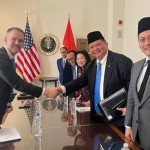Total number of posts 461.
On October 9, 2025, AMRO revised its growth forecast for the ASEAN+3 region to 4.1% in 2025 and 3.8% in 2026, reflecting strong first-half performance and better-than-expected export results. Despite challenges from U.S. inflation and tariff policies, the region remains stable and resilient, supported by solid macroeconomic fundamentals and deepening intra-regional trade linkages.

On October 9, 2025, the ASEAN+3 Macroeconomic Research Office (AMRO) raised its growth forecast for the ASEAN+3 region to 4.1% for 2025 and 3.8% for 2026, marking an upward revision from its July projection. The adjustment reflects robust first-half growth and stronger-than-expected export performance.
According to the ASEAN+3 Financial Stability Report 2025 and the ASEAN+3 Regional Economic Outlook (October 2025 Update), market conditions have gradually stabilized since April following volatility triggered by the U.S. reciprocal import tariff policy announced earlier that month.
However, the report noted that higher U.S. import tariffs could pressure smaller firms with high exposure to the American market, affecting profit margins and trade dynamics.
AMRO also warned that persistent inflation in the United States and the Federal Reserve’s tight monetary stance may create spillover effects across other regions, further complicating the global economic outlook. In addition, geopolitical tensions and fluctuations in the U.S. dollar continue to fragment the international financial system.
Nevertheless, AMRO emphasized that ASEAN+3 economies remain resilient, underpinned by strong macroeconomic fundamentals and prudent policy frameworks. Key strengths include robust banking systems, deepening financial markets, ample foreign reserves, and policy flexibility, all of which help the region maintain stability amid global headwinds.
AMRO further highlighted that intra-regional trade integration has strengthened, enabling ASEAN+3 economies to become more deeply embedded in global value chains and better insulated from external shocks.
Source: Compiled by the Multilateral Trade Policy Department, Ministry of Industry and Trade of Viet Nam














